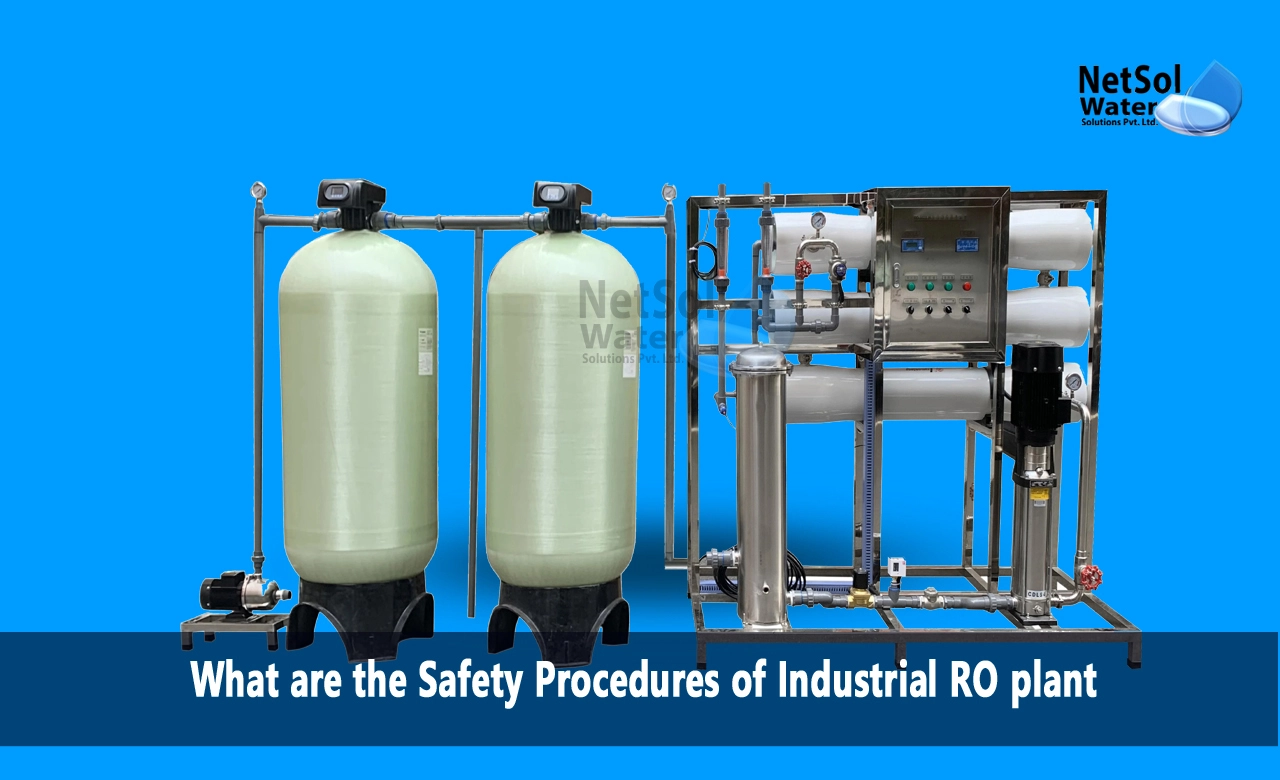What are the Safety Procedures of Industrial RO plant?
Reverse osmosis (RO) systems play a critical role in providing purified water for countless industrial processes and operations. While RO technology is relatively safe compared to alternative water treatment methods, industrial RO plants still present potential hazards that must be properly managed. Implementing robust safety protocols covering equipment, materials handling, maintenance activities, and general facility procedures is essential. Protecting worker health and preventing accidents/injury requires comprehensive safety planning for industrial RO installations.
High-Pressure Safety
At the core of any RO plant are reverse osmosis membrane modules operated at high pressures up to 1000 psi. This pressurised equipment poses serious risks if a failure occurs, as the release of stored energy could result in major damage, fluid injection injuries, or personnel struck by whipping pipes/components. Vessels must be inspected regularly to verify integrity. Pressure relief valves, rupture disks, and documented pressure test procedures help mitigate risks. Isolation valves allow controlled system shutdown, replacements, or maintenance tasks. Proper PPE, like safety glasses/clothing and noise protection, is critical.
Chemical Handling
While RO avoids heavy chemical dosing compared to processes like ion exchange, facilities still use some hazardous materials, requiring proper safeguards. Acids and antiscalants pose burn hazards through skin/eye exposure and create inhalation risks. RO disinfectants/oxidants used for sanitisation, like sodium hypochlorite, are toxic and oxidative. OSHA-compliant storage, PPE standards, ventilation systems, spill containment berms, safety showers, and neutralisers address handling risks. Dosing equipment interlocks prevent uncontrolled chemical injection. Documented procedures cover requirements for receiving/transferring bulk chemicals.
Confined Spaces
RO plants have confined spaces like membrane vessel/housing interiors, storage tanks, pipe trenches, pump rooms, and other enclosures presenting serious safety hazards. Adequate ventilation equipment is mandatory, given the potential for exposure to hazardous gases, vapours, or low oxygen levels. Permitted confined space entry protocols restrict uncontrolled access and require atmospheric testing, air monitoring, emergency extraction equipment, attendant oversight, and other precautions to mitigate risks of entrapment, dangerous air contamination, or engulfment. Respiratory protection standards must also be observed.
Electrical Dangers
Industrial-scale RO systems utilise high voltage for large pump motors along with lower voltages powering automated valves, control panels, lighting, and auxiliary equipment. Robust lockout/tagout (LOTO) procedures protect workers from electric shock during maintenance by ensuring all possible energy sources are neutralised with zero potential for unexpected startup. Ground fault and arc flash protection minimise damage if faults occur.
Concentrate/Waste Disposal
The concentrated reject stream from RO contains elevated levels of contaminants removed from feed water. As an industrial waste, this effluent poses some hazards and requires careful handling, especially where zero liquid discharge (ZLD) systems recover solids for disposal. Caustic chemicals may be added to raise pH-protecting equipment. RO concentrates can include heavy metals, hydrocarbons, and other toxins, making exposure an occupational health risk. Designated containment, leak mitigation provisions, and worker PPE standards must address concentrate hazards per site-specific conditions.
Netsol Water's Safety-Oriented Engineering
Safety is a core design principle governing all of Netsol Water's industrial RO systems and treatment trains. Our turnkey solutions include thorough hazard analysis adhering to EPA standards, along with client-specified regulations. Netsol Water’s products carry certifications from authorities. We incorporate robust instrumentation with continuous preventing system operation outside safe parameters. For hazardous areas, equipment meets explosion-proof requirements. Access points restrict unintended entry, while ergonomic designs facilitate safe routine maintenance activities. Our documentation encompasses comprehensive emergency response plans complementing on-site programs. Netsol Water's integrated safety approach allows clients to operate RO plants with full confidence.
Conclusion
Industrial reverse osmosis purification systems provide exceptionally safe and reliable water treatment compared to alternative methods. However, ensuring worker safety around an RO plant's high pressures, chemicals, confined spaces, electrical components, and waste streams requires rigorous safety protocols and engineering controls. Dedicated safety planning is crucial when implementing RO installations, covering everything from initial hazard analysis through ongoing operational training, maintenance procedures, protective equipment, exposure monitoring, and documentation. Working with expert solution providers like Netsol Water ensures industrial RO systems achieve full productive potential while upholding an exemplary safety culture and workplace incident prevention.
To explore customised commercial RO plants, Industrial RO plants, ETP or STP solutions for your needs in your areas and nearby regions, contact Netsol Water at:
Phone: +91-965-060-8473, Email: enquiry@netsolwater.com



